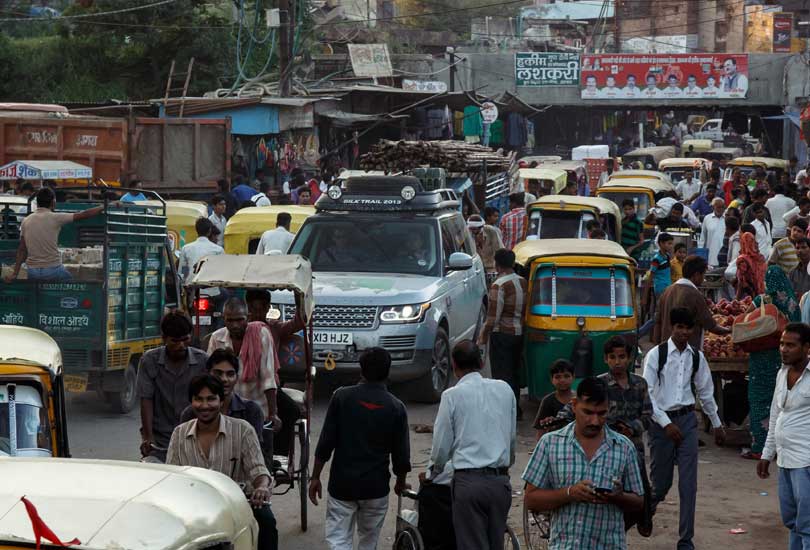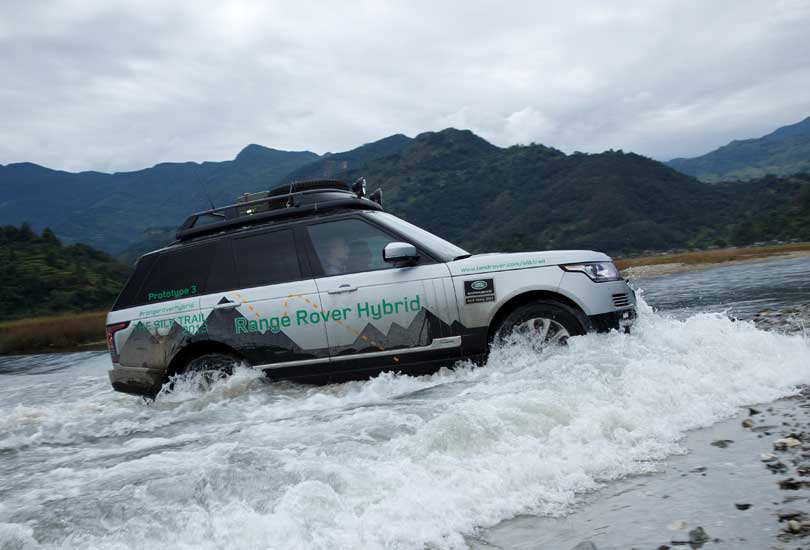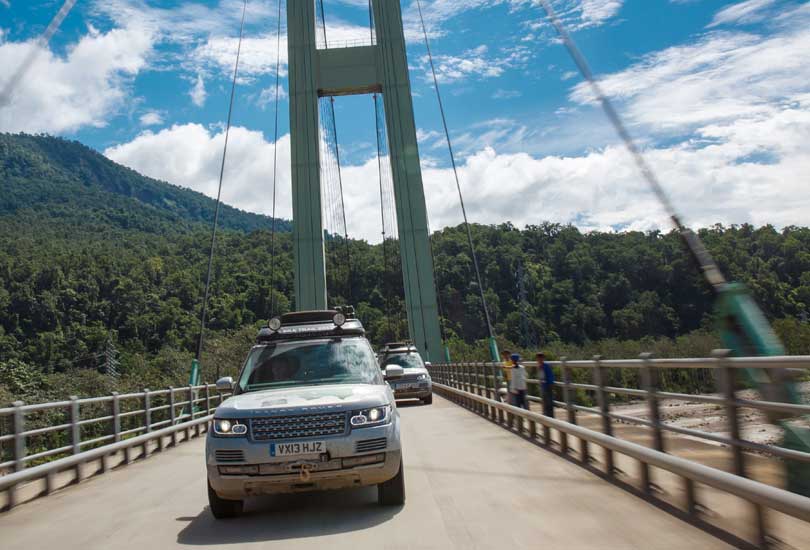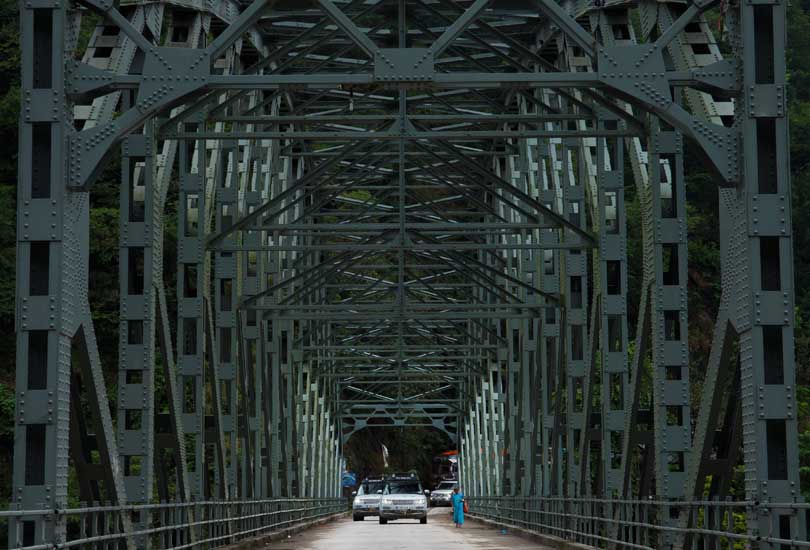More images from Land Rover’s Silk Trail 2013 expedition
10,600 miles from Solihull, UK, to Mumbai, India following the legendary Silk Road trading route. Over 2,000 years ago the route first connected Asia with Europe. This epic journey really is putting the test to the New Range Rover Hybrid models before the production sign-off.
- Range Rover Hybrid prototypes leave behind the Himalayas for the hot and humid plains approaching the Nepal-India border
- Dense traffic and erratic drivers are the new daily hazard facing the expedition
- The final country of 14 on the expedition now beckons
- Over 9,600 miles (15,500 kilometres) driven since leaving Solihull, with 1,060 miles (1,700 kilometres) further to Mumbai
The Silk Trail 2013 expedition prepared to enter the fourteenth and final country on the epic journey from Solihull to Mumbai when it passed through Nepal and reached the town of Mahendranagar on the border with India.
Leaving behind high altitudes and the peaks of the Himalayas, the three Range Rover Hybrid prototypes were driven on flatter but more hazardous roads, passing paddy fields and rain forests.
The heat and humidity, and the density and unpredictability of the traffic, have been increasing every day. The responsiveness of the Hybrid engine to the driver’s throttle commands, and its ability to accelerate strongly, enabled safe overtaking manoeuvres on roads busy with trucks and buses.
The seventh of the expedition’s eight-week journey started by crossing a deep river ravine on the Friendship Bridge connecting the town of Zhangmu in China with the village of Kodari in Nepal. One-by-one the Range Rover Hybrids were given permission to drive slowly across the bridge with the passengers required to follow them over on foot.
On the other side of the bridge lay a journey to Kathmandu of merely 85 miles – but the traffic was so dense, and the roads so severely potholed, that the Range Rover again had to draw on its reserves of acceleration and its class leading (590mm) wheel articulation to ride smoothly over the bumps. Even so, this short distance took three hours to drive – an indication of the challenges that would lie ahead in the next week on Nepal’s hazardously busy roads.
The next leg of the journey, from Kathmandu to Pokhara, a town surrounded by three of the ten highest mountains in the world, was a 127-mile stretch of road demanding eight hours of unwavering concentration. Every foot of road space was contested by bicycles, tricycles, horse-drawn carts, scooters, motorbikes, cars, mini-buses, buses, trucks, roving cows, slow-moving water buffalo, loose dogs, and fearless pedestrians.
The Range Rover’s commanding driving position was invaluable, allowing drivers to see further down the road and recognise hazards sooner. The need for regular braking also kept the Hybrid motor’s battery recharged, ensuring that it assisted the 3-litre SDV6 diesel engine and further improved fuel economy despite the ever-changing pace of driving.
The three Range Rover Hybrid prototypes were then ready to cross the bridge over the Mahakali River and into India, for the final 1,000 miles to the expedition’s destination, the city of Mumbai.
See more official Land-Rover video and images of the journey Here
Read More Land-Rover News and reviews at Drive.co.uk/LAND-ROVER
No items found, please search again.





